
Pain de Rémésy

A nutritious and delicious bread based on the writings of Christian Rémésy. In the same vein as respectus panis but Rémésy deserves a bread named after him given his outsized influence in the research area of bread nutrition. This bread is typically very dense (which is healthier because lower glycemic load. See:Parameters controlling the glycaemic response to breads.)
For the loaf shown, 800 grams flour, 60% strong white bread flour, with the remainder whole wheat flour. Spelt can also be incorporated as part of the whole wheat fraction, Einkorn as part of the white fraction. This combination of flours should approximate Type 80 flour. Seeds can be added to the flour and incorporated for the fermentation.
66% hydration
1-3% sourdough starter (start with 1% and experiment)
1% salt
Incorporate and do a very short hand mix and knead.
Ferment for at least 20 hours at between 15 and 20 C.
Shape and proof a bit if needed, then bake.
A few more details: In cooler temps I typically warm the water to about 40C and then add the starter to that, mix and swirl around, then let sit a bit. Then add salt to this mixture. The salt helps to regulate the fermentation. The flours should be mixed together then added to the wet mixture. Once incorporated, use a hand for the short knead.
It may be towards 20 or more hours before you see the dough double-ish in volume.
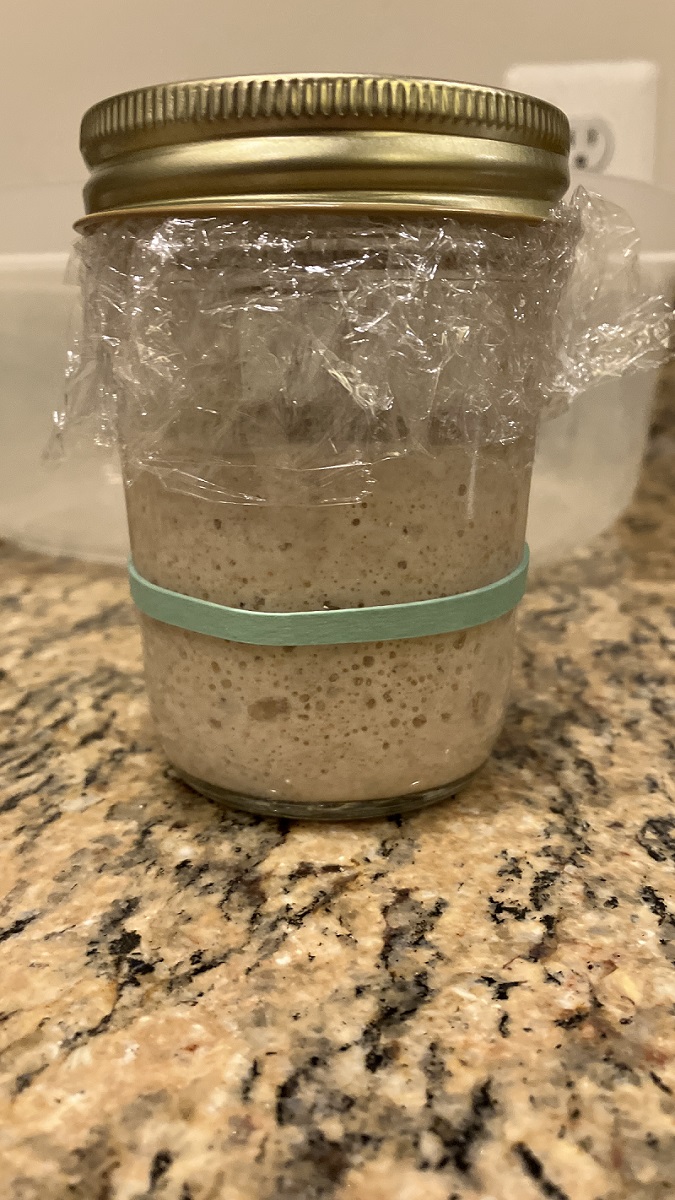
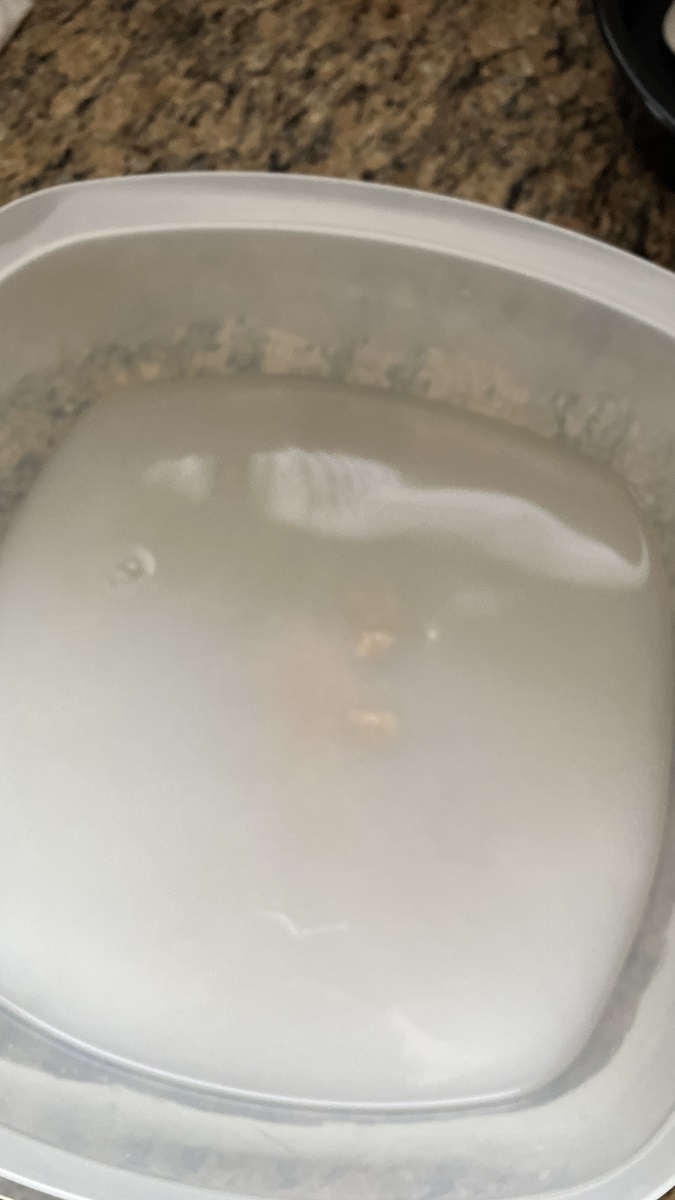

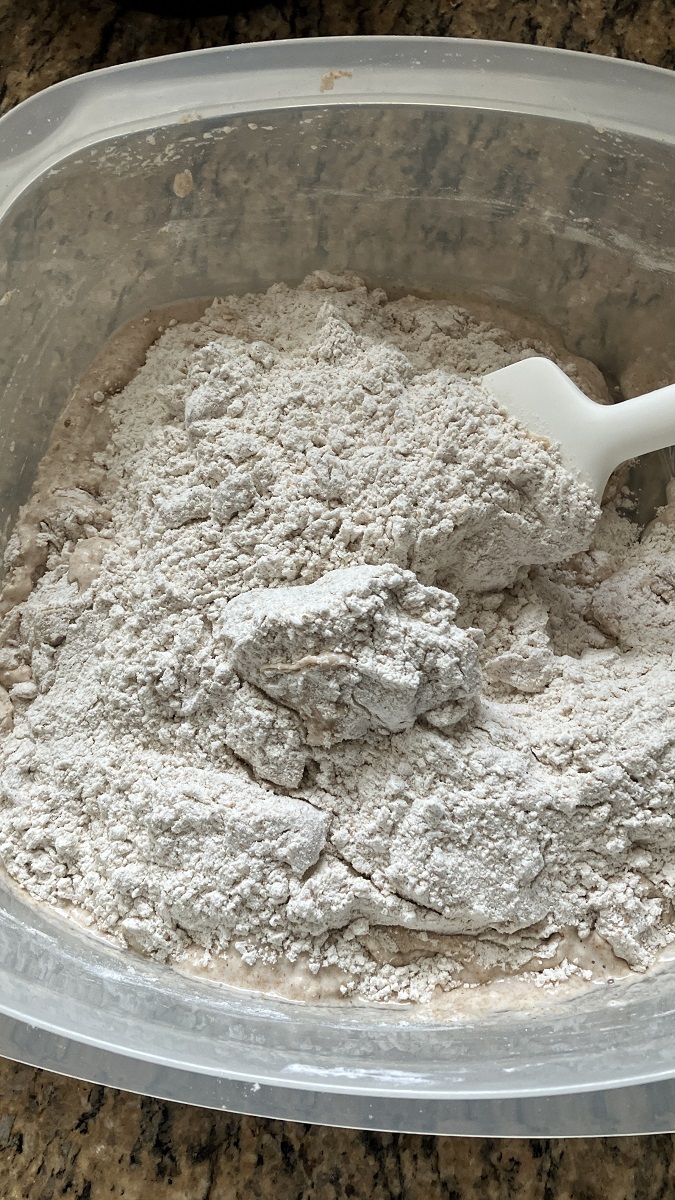
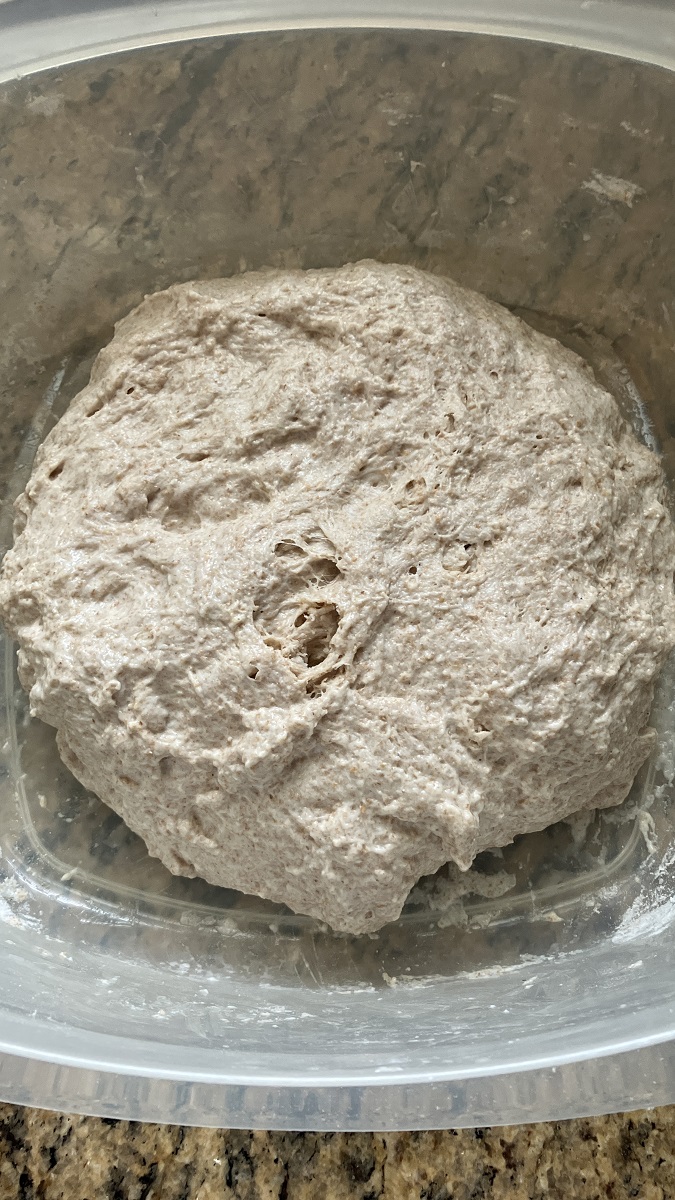
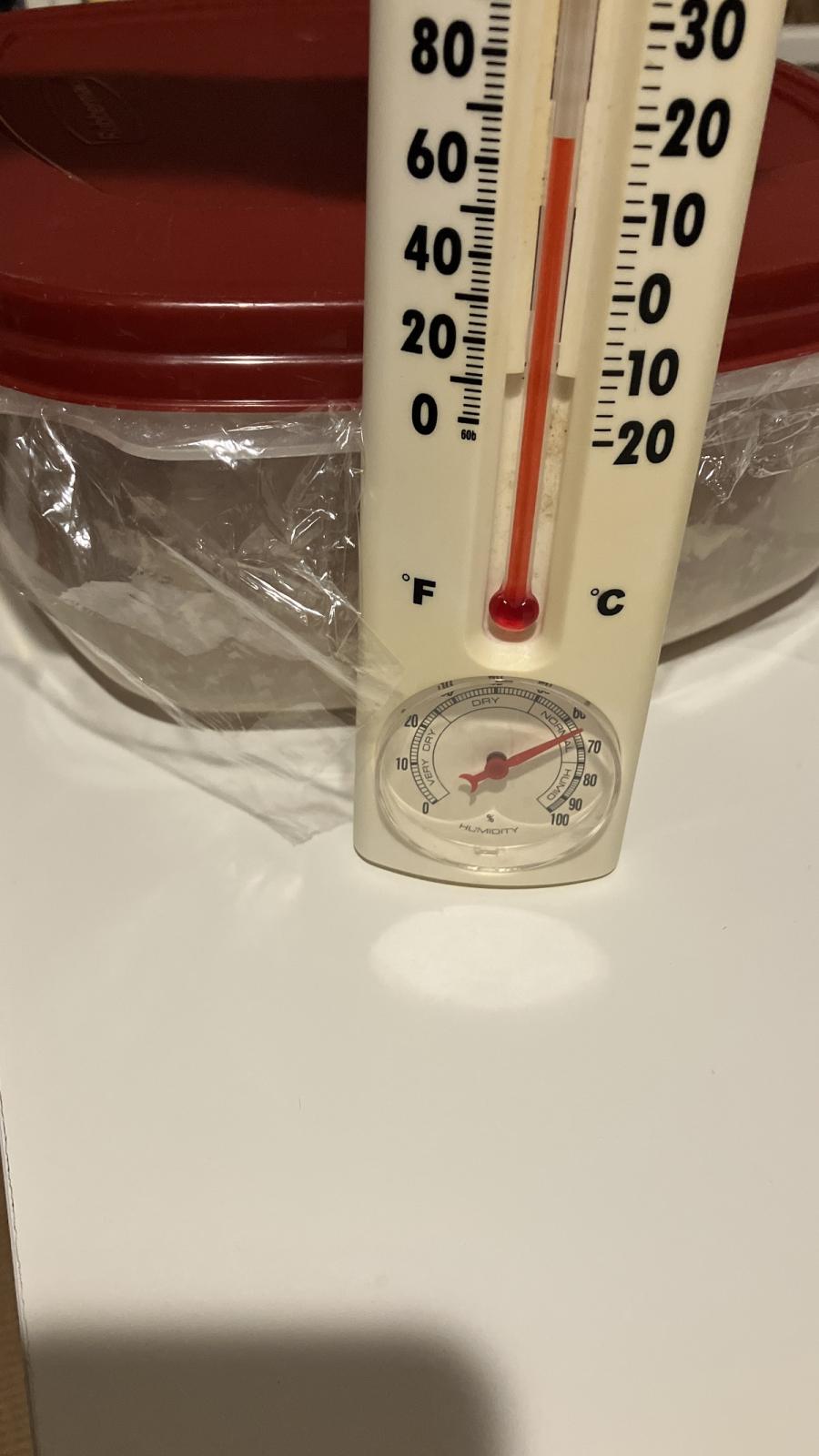
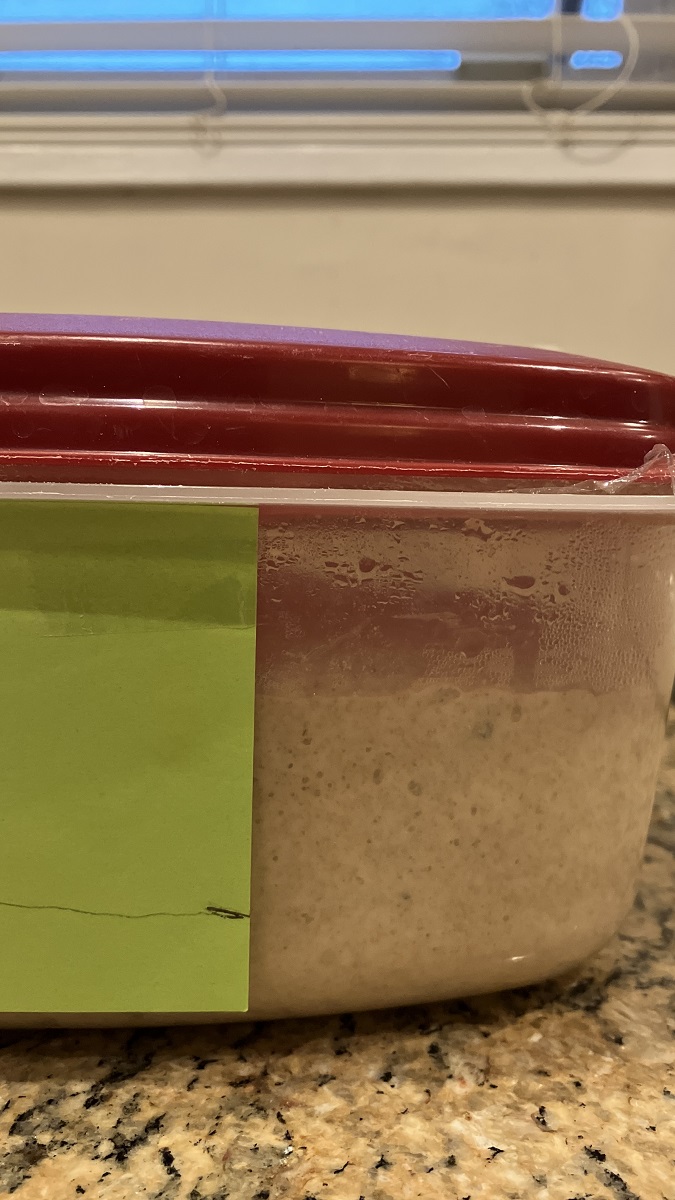
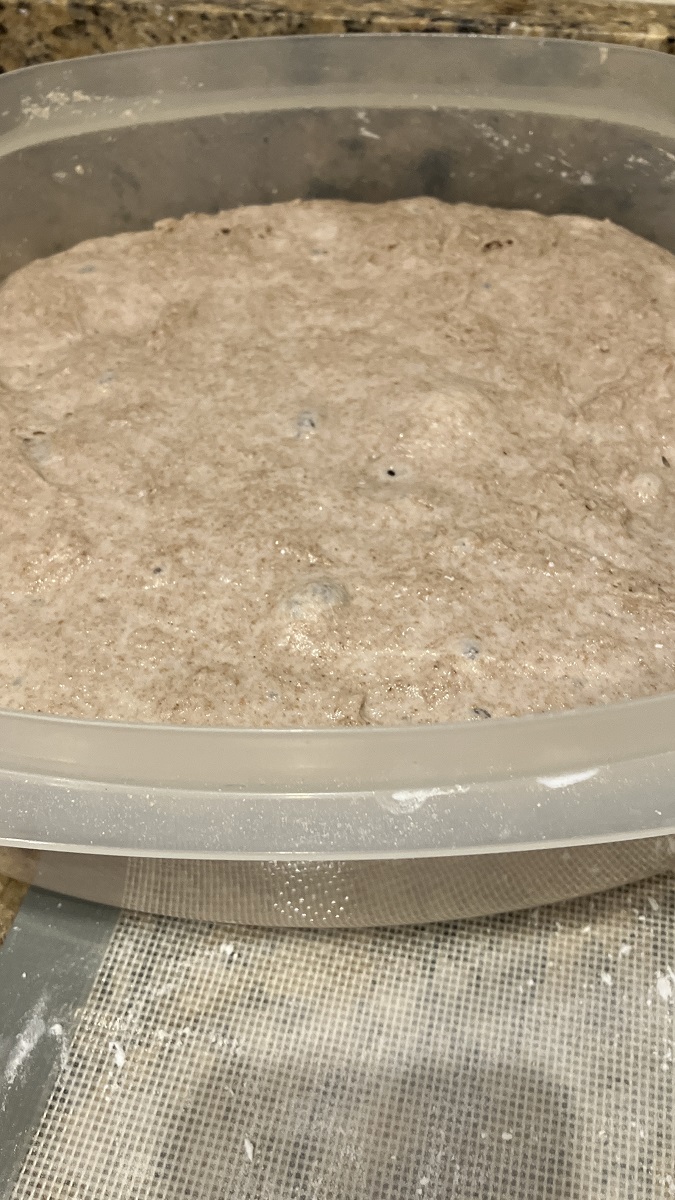
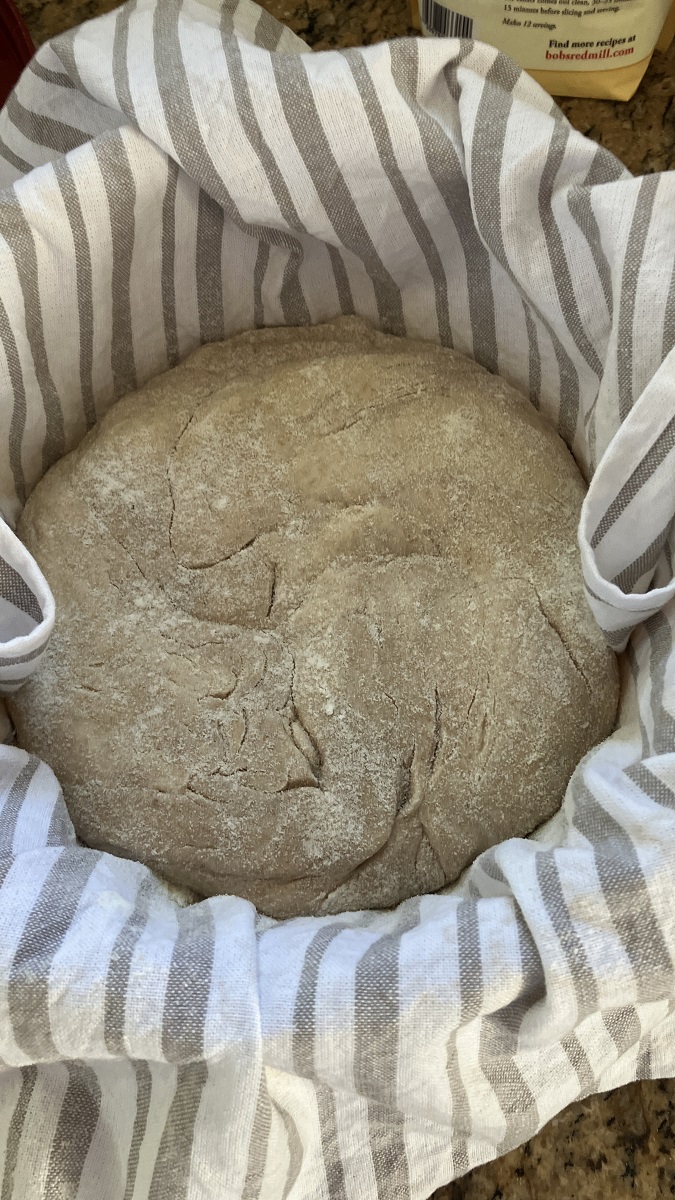
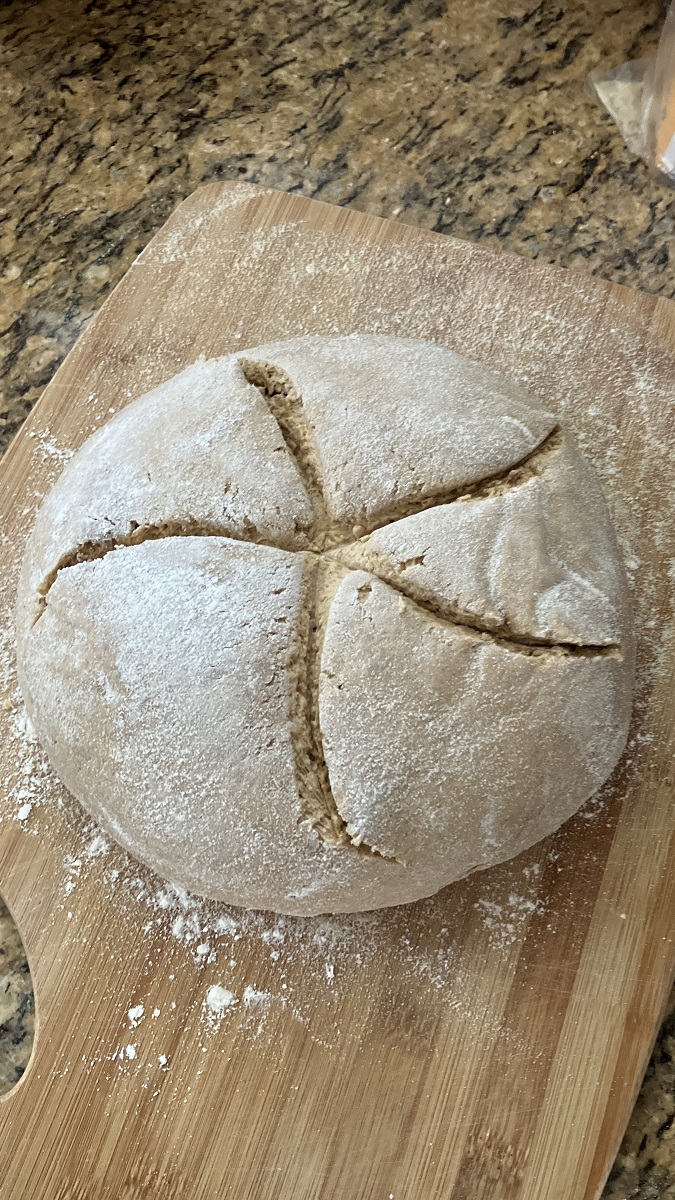
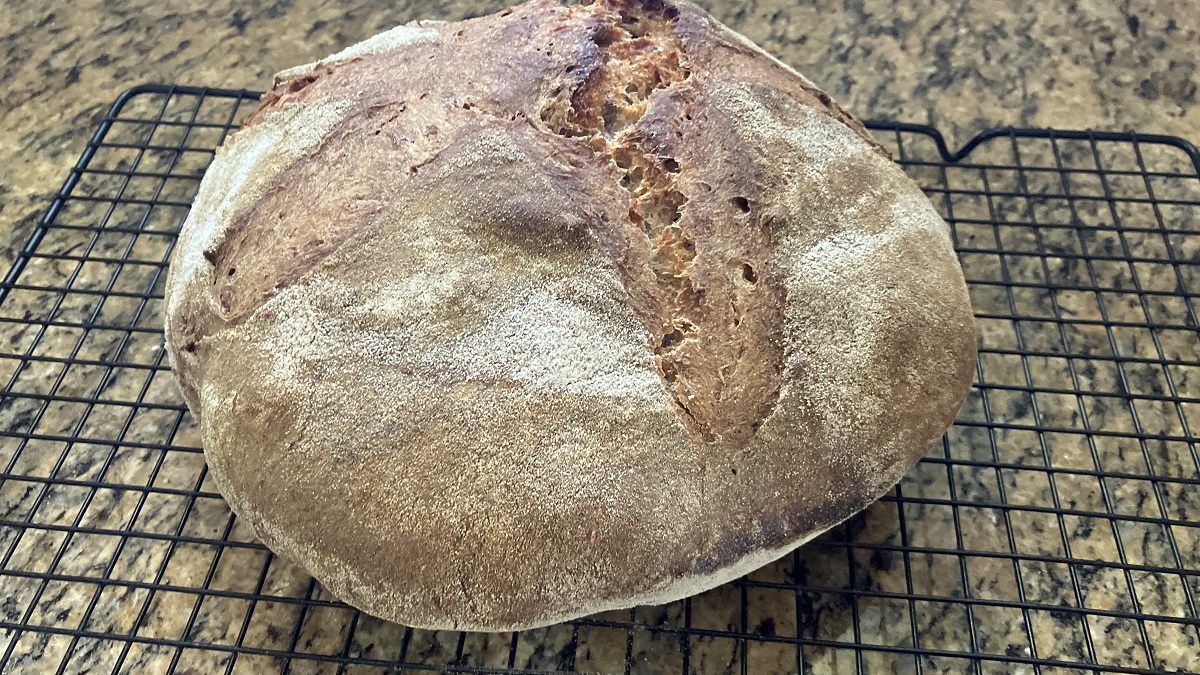
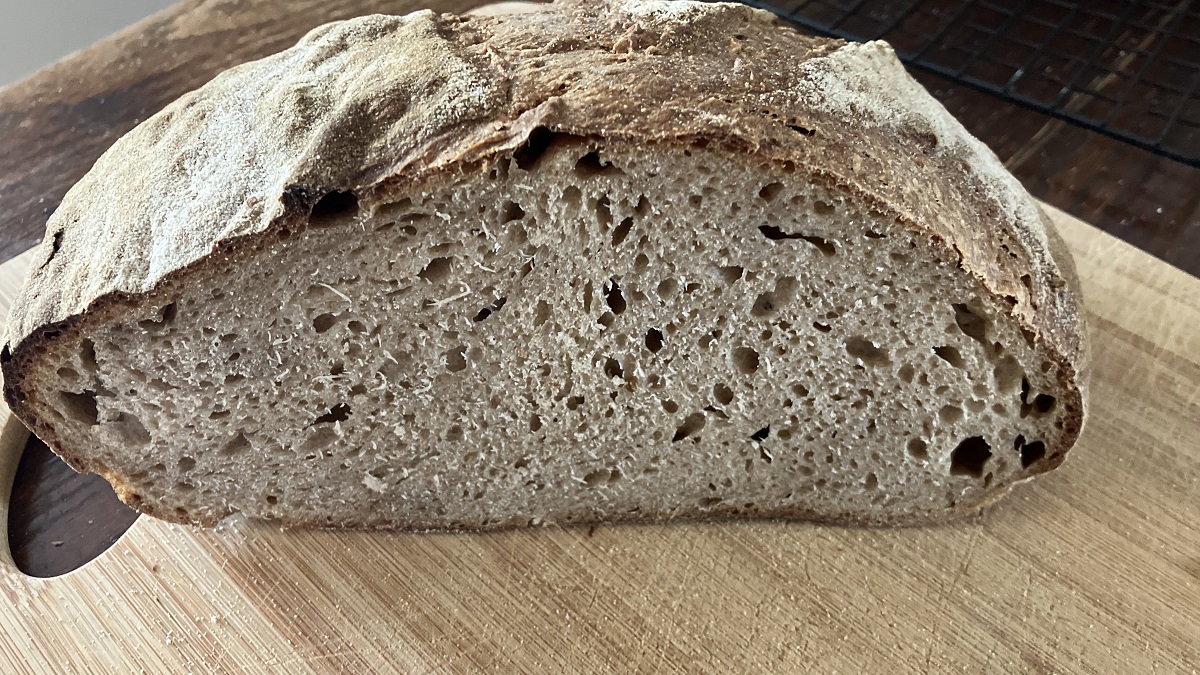
update, a recent seeded loaf baked in a loaf pan:
With pumpkin seeds and dates:
With rye flour (18%)






Comments
1% salt seems low but I'd like to try it. I'm experimenting with combining ice with my "proofer" to achieve a steady 60F.
I think it tastes great and the salt seems just right to me now after making bread this way for months. Rémésy discusses in his writings how over time more salt has been added to bread for flavor, but longer fermentation times (with less salt and starter) allow the flour enzymes, bacteria, and yeast to develop great flavors. I must agree and have never thought it seemed under-salted.
I do my fermentation in our basement, which tends to remain a steady 18C year round. If you have a basement it might be worth checking the temp there.
Basements are rare here in North Carolina. Thanks for the info. I'm going to try it when I finish the current loaf. It will be a fun experiment.
Wonderful, I hope all goes well, would be interested to know how it goes for you. I've been making this bread now for several months, have had a lot of fun experimenting with different hydrations, flours, and fermentation times, though have tended to keep the salt, and starter proportions the same, and always the same temp. I've even tried various conditions of started, well-fed and very active, all the way to just out of the fridge and not very active. Different results in the margins but the method has always worked which is good for someone like me that likes to let the dough work its magic while I just assist.
Have you tried baking it in a pan? I typically make pan breads for toast and sandwiches. I'm going to try a loaf in my tiny 10x10x10 cm pan.
I did try splitting it into a couple of loaf pans and it worked out just fine, though I usually just put in the oven on an upside down baking sheet.
I modified my usual process which consists of fermenting 45% of the flour plus 10% starter at 30C for 3 hours then combining it with an oat/flaxseed meal soaker, the remaining flour, a little olive oil, malt syrup, salt and a little instant yeast (to make sure I get enough rise before it starts degrading).
For this experiment, I replaced the short fast preferment with 23 hours at 15C with only 3% starter and 1% salt. The preferment nearly doubled and the pH dropped to 4.5. Then I proceeded as usual except I reduced the salt to 1.5% (I'll drop to 1% next time)
The resulting loaf is mildly sour and leans more toward acetic acid than my usual loaf which is dominated by lactic acid. The texture and crumb are what I consider ideal and very similar to my usual loaf.
This was a fun experiment.
Awesome, glad you enjoyed it. I know what you mean about the acetic acid, my dough tend to have an apple-like fragrance to them, which I like. Have never monitored pH, may have to try that sometime.